|
Residential
Landmark
Buildings
|
|
|
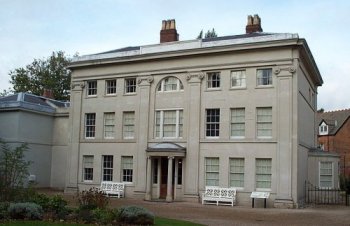
|
James Watt used steam to heat a metal box
radiator in his office (1784), while his partner, Matthew Boulton, used
a similar device in his manufactory and used steam to heat his bath at
Soho House (1789). But warm air had more success than steam in early
schemes, and used an iron cockle inverted over a fire. Air was passed
over the external surface of the cockle before rising in ducts to
the room to be heated. Boulton used this system when redeveloping and
extending Soho House. Distribution ducts were either built into
brick walls or were beneath the wooden floors of rooms: air flow was
regulated by a series of butterfly dampers. This is possibly the first
warm air installation in a large house in Britain since the Roman
hypocaust system. |
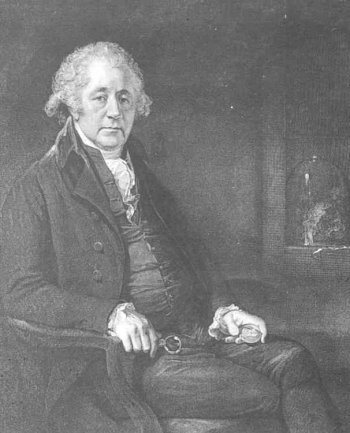 |
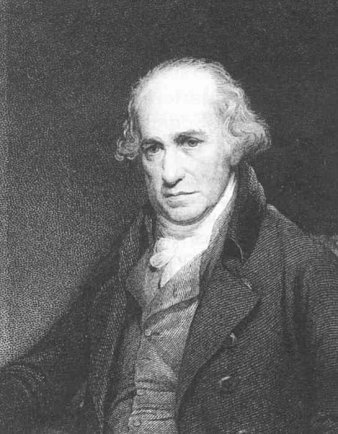
|
Matthew Boulton 1728 -
1809
James
Watt 1736
- 1819
Wall plaque with details of furnace heating
system. Outlet openings for
hot air in staircase risers.
Cut-away section of wall showing vertical hot air duct
within the building structure
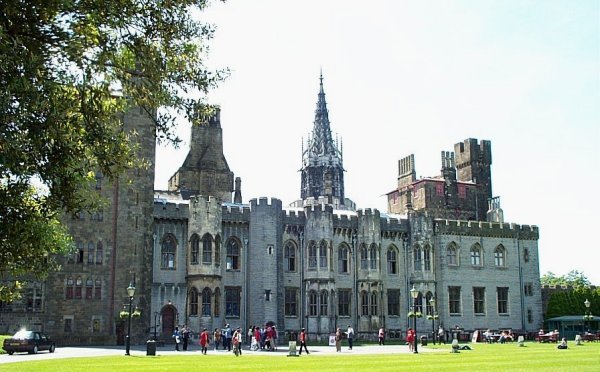
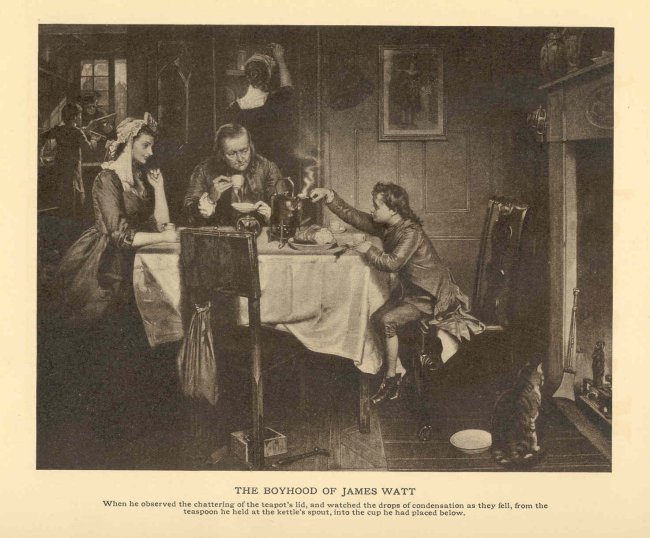 |
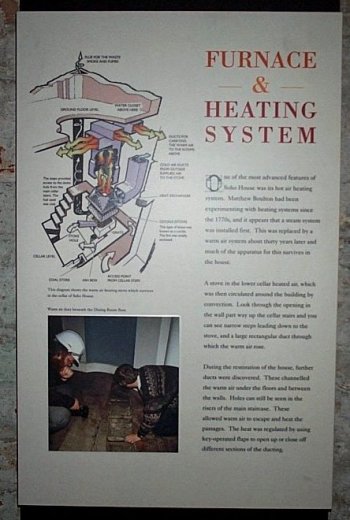 |
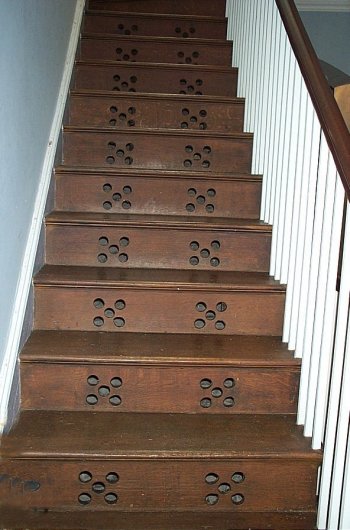 |
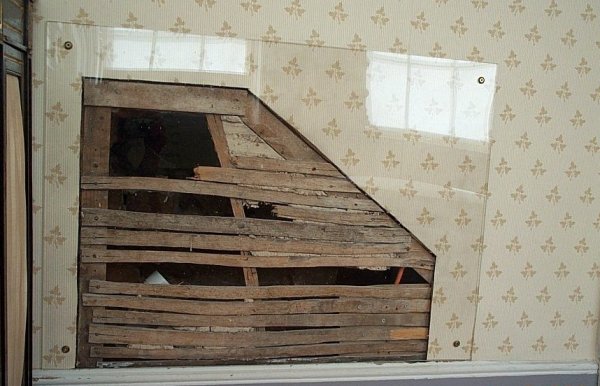 |
within the building structure
|
BOULTON & WATT SOHO WORKS
BIRMINGHAM
Building boilers for steam engines. 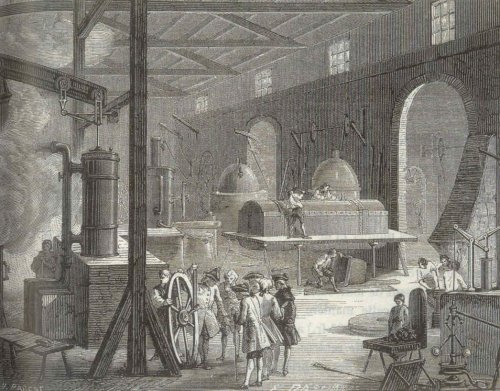 Boulton is reputed to like
to say,
"We make here what all the world wants - Power" |
|
The Octagon, Liverpool, 1867 |
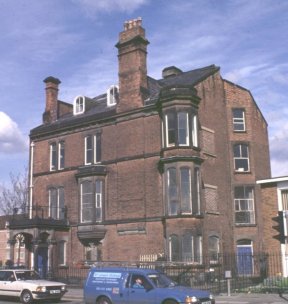
|
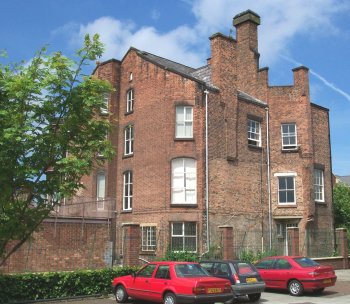 |
| Dr Hayward’s scheme for his house, the Octagon, is described in a textbook, Health and Comfort in House Building (1872). Fresh air was drawn-in,collected and warmed in the basement. The roof space was used as a foul air chamber into which the vitiated air of the rooms was collected, being drawn by a kitchen fire into a shaft passing to the ground floor, then ascending behind the fire and up the chimney stack (an arrangement not uncommon at this time). However, a feature of the design is the way in which all the principal rooms opened off closed lobbies, separated by doors from the Hall and Staircase, which formed a vertical supply duct delivering filtered warmed air. The heating was supplemented by conventional fireplaces and ventilated gas lights, arranged to promote the desired air circulation patterns. |
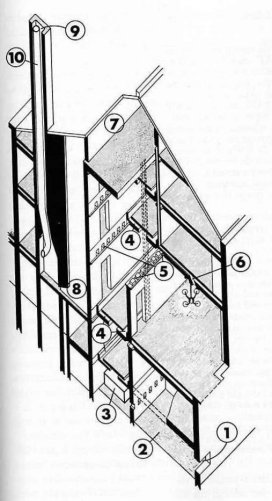 |
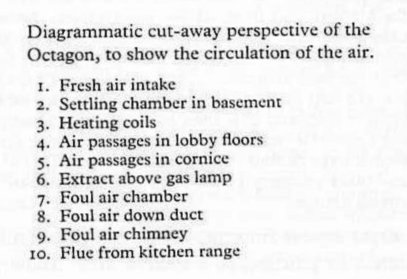 |
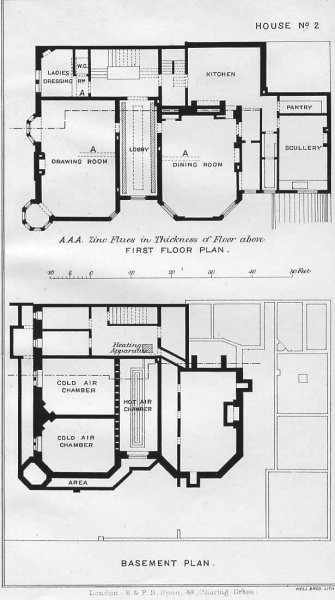 |
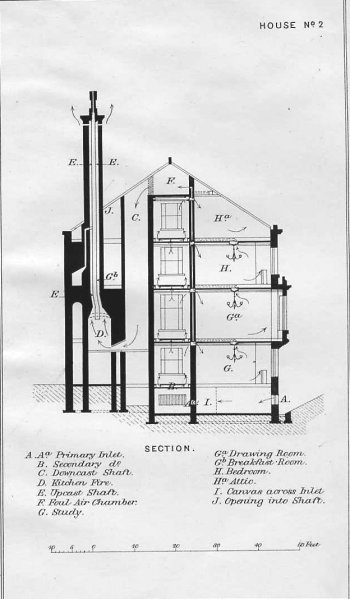 |
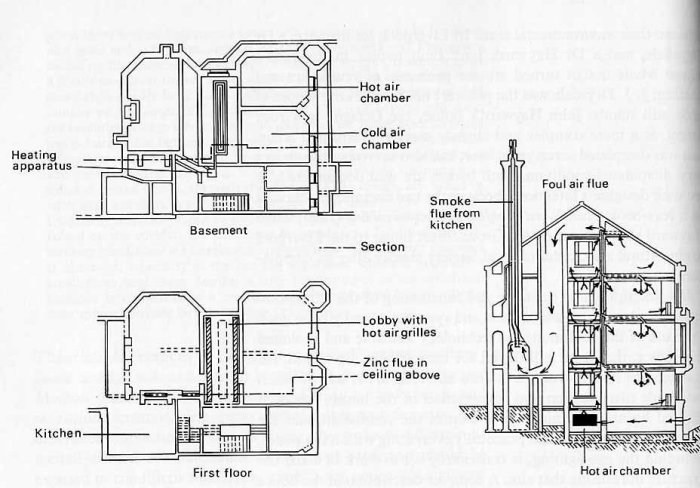 |
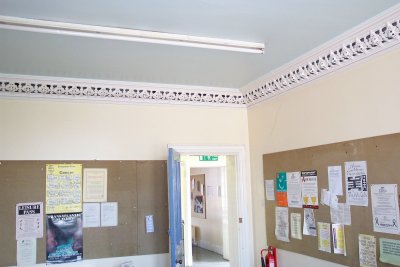 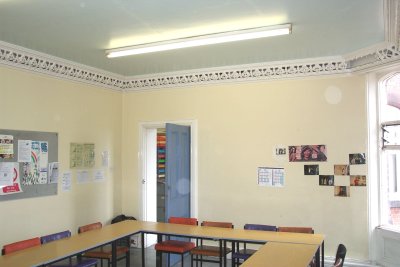 |
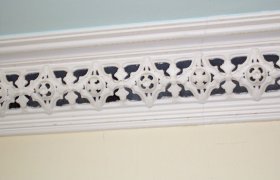 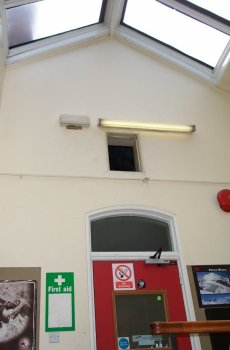 |
Views
of the decorative cornice in the rooms with the
air passages which formed part of the ventilation system.
air passages which formed part of the ventilation system.
 The
above picture shows an extract
duct in the roof space. The right hand picture shows
the
roof space which was used as the foul air chamber. |
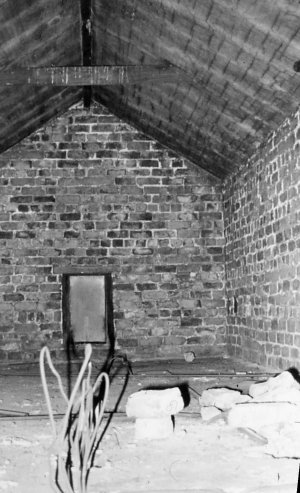 |
|
The Royal Pavilion, Brighton 1826 |

The Great Banqueting Hall
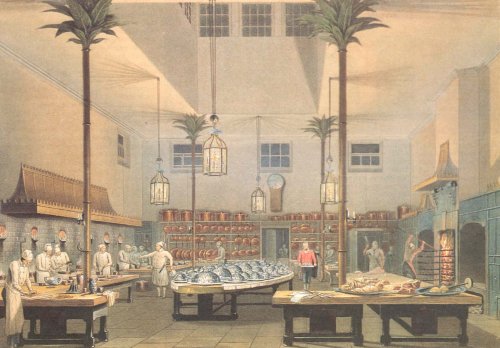
The Great Kitchen
|
The
Prince
Regent (later George IV) was determined that the Royal Pavilion should
provide the last word in comfort and convenience. By the early 1820s,
the Pavilion had gas lighting, an underfloor hot-air heating system,
hot and cold water supplies, water closets and a bathroom fitted with
douche, shower and vapour baths, as well as a 16 ft x 10 ft marble
bath, supplied with salt water from the sea. John
Nash’s reconstruction included the creation of the Great Kitchen
(1816-18) and associated service rooms with all the latest gadgets and
machinery. There were stewing stoves, ovens, hot closets, bread furnace
ovens
and a large steam room with steam boilers. There was pumped well-water
and an ice-house in the garden. The kitchen was lit by copper wall
lamps and four hexagonal lanterns fitted with Argand oil lamps. The
stewing stoves were provided with a ventilation canopy and the large
kitchen fire was fitted with a mechanical spit powered from the chimney
draught.
|
|
Cardiff
Castle 1850 |

Cardiff was once part of the Welsh property of the Marquis of Bute. The second Marquess, realising that the growing coal and iron industry of South Wales needed an outlet, took the bold step of financing the construction of docks at Cardiff. After his death in 1848 a firm of marine engineers, Walker, Burges & Cooper (c 1855) took over the completion of the East Bute Docks at Cardiff. this brought together the third Marquess and william Burges son of the marine engineer, alfred Burges. William's medieval interests took him into Gothic architecture, and Lord Bute was to become the principal support of Burges's practice. |
Burgess wrote a report (1865) , which he sent to Lord Bute on the possibility of restoring Cardiff Castle - a walled enclosure with the remains of a keep and medieval lodgings on one side, the latter having previously been remodelled by Henry Holland (C.1776). Work started with the building of the famous 150 feet high clock tower, and continued with main castle buildings and apartments, all lavishly decorated, the provision of the Bute Tower, and other extensions and renovations. |
AUGUST 2002